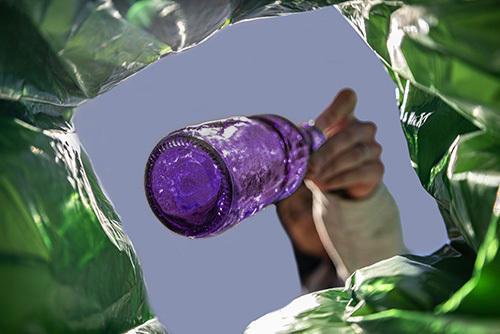Understanding the Recycling Process: From Collection to Reuse
12.21.2023
12.21.2023

As society becomes more environmentally conscious, many have turned recycling into a habit. This is excellent news! It’s going to take a collective effort to make a lasting impact, so each of us doing our part is the best way to create a more sustainable future.
While some of us don’t think much about our recycled materials after they leave the bin, what happens to those recyclables after they’re tossed into the mysterious void of good intentions and unseen processes. How does that pile of plastic bottles transform into new bottles, packaging, children’s toys, and even clothing? This blog discusses the recycling process, detailing how materials go from the collection bin to innovative new uses.
Recycling collection can take a few different forms depending on where you live. If you are an urbanite, reside in the suburbs, or live in a populated area, you likely place your recyclables in a curbside bin where they are collected and whisked away to a recycling facility. If you live in a rural area, there’s a good chance you have to take your recyclables to a local waste facility.
After recyclables are sent to a facility, they’re placed on a massive conveyor belt where they are sorted by material type — plastic number 1, plastic number 2, glass, aluminum, steel, etc. Any non-recyclables that may have snuck into the mix are picked out so they don’t contaminate the other materials. Though there are people who work in these recycling facilities, much of the sorting and picking is done with machinery — some of which is even controlled by AI technology. To learn more about these efficient advances, take a look at Recycling Technology Trends in 2023.
After all the like materials have been separated and sorted, they are cleaned to remove unwanted dirt and debris. This process not only makes the materials look better after they are processed, but it also allows the end product of these materials to be more durable and of higher quality. After being cleaned, the materials are baled together and prepared for transport to various companies to be reprocessed and transformed into new products.
Based on their potential uses, the separated recycled materials take on different journeys after they leave the recycling facility. Each must be prepped a certain way before becoming something new. Here’s a brief summary of how various recyclables can be reused and repurposed.
After cleaning, plastic bottles are shredded into flakes and transformed into pellets. Then, they take on a new life as:
Paper products such as old newspapers and magazines are pulped with chemicals and water to separate the fibers before being transformed into new products that include:
Once glass is processed in a facility, it is melted down and molded into a wide array of products that include:
Before becoming a new product, metal must be shredded, melted, and purified to ensure the new product is high-quality. Recycled metal can be used to create:
So, the next time you set that recycling bin by the curb or take your recyclables to a local collection point, you can feel good knowing those materials will have a second life as something useful — and feel even better about the fact that you’ve played a role in protecting the planet we all share.
At Verdeco, we’re transforming the way that companies view one of the world’s most used plastics — polyethylene terephthalate (PET). Our mission is to create recycled PET that doesn’t “feel” recycled. Our rPET can stand toe-to-toe with virgin PET, making it one of the most viable alternatives on the market. We believe in creating high-quality, high-performing materials that exceed the standards of average rPET. This distinction means that our rPET stands as the clear choice among other recycled plastics and gives manufacturers a high-quality, cost-effective way to fulfill their sustainability initiatives and commitments.
To learn more about how Verdeco is changing the world, visit verdecorecycling.com.
Elevate your commitment to sustainability while upholding your high standards of quality. Talk with us today to discover the possibilities.